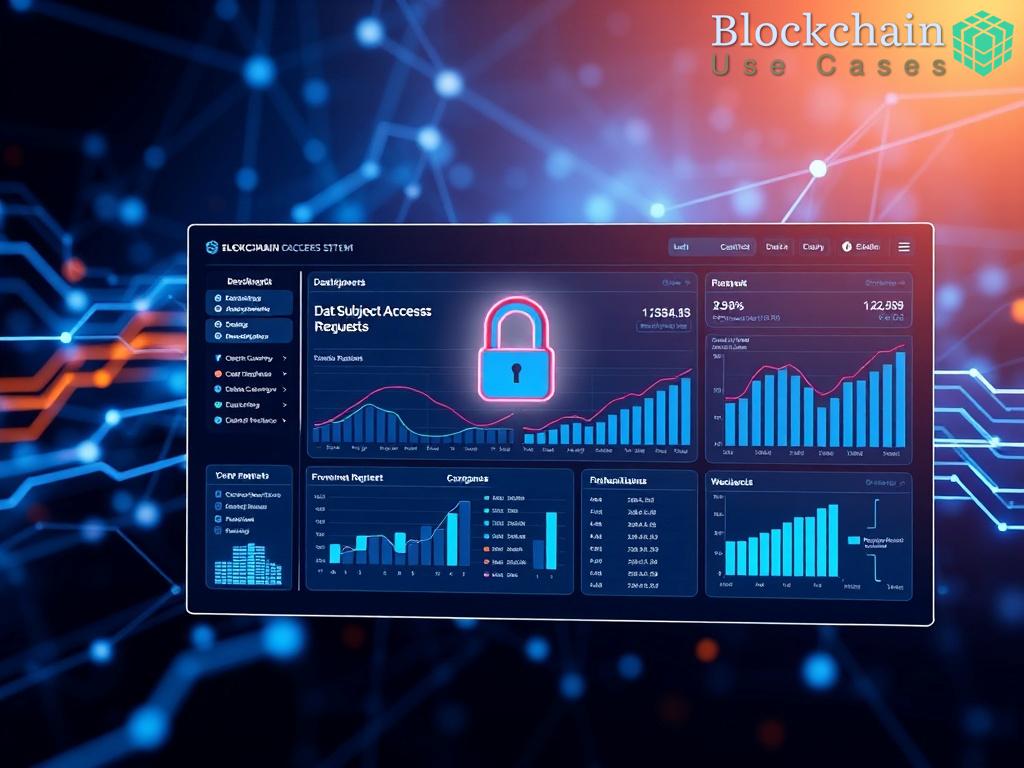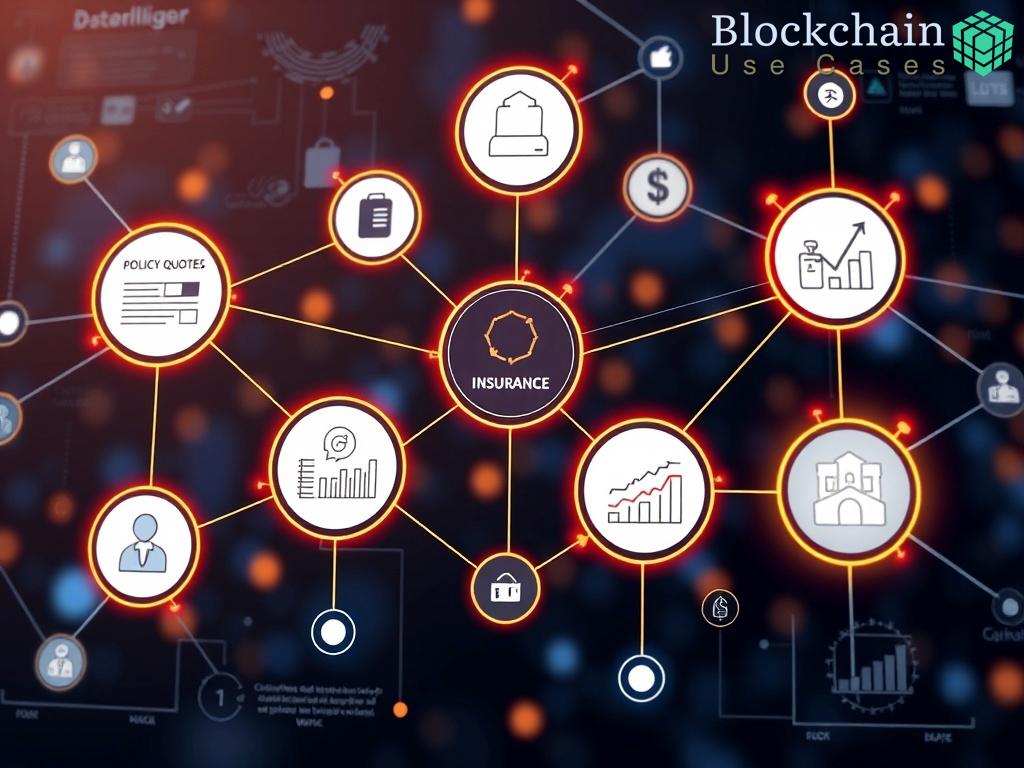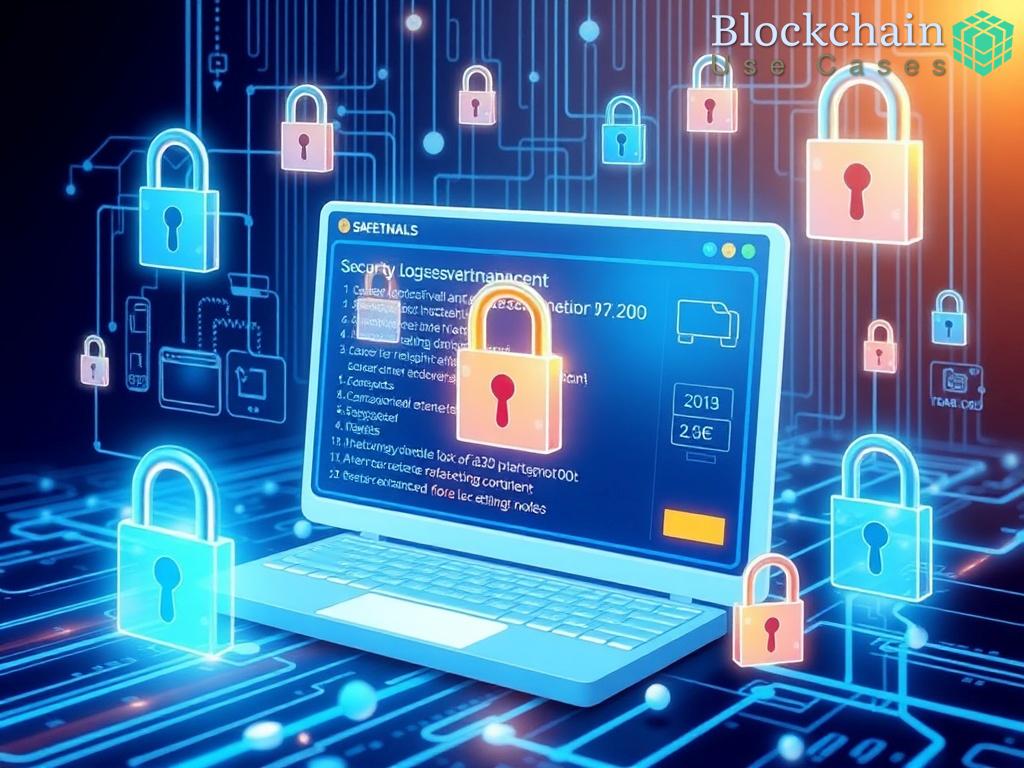Introduction to Smart Contracts in Security Metrics
As digital transformation accelerates across industries, the need for robust security measures becomes increasingly paramount. Smart contracts have emerged as a revolutionary tool that can streamline the process of collecting and reporting security metrics. These self-executing contracts, with the terms of the agreement directly written into code, facilitate transparency, efficiency, and reliability in automated systems.
In the realm of security metrics, smart contracts offer a unique solution to automate the tedious and often error-prone task of metrics collection. By leveraging blockchain technology, these contracts ensure that once conditions are met, actions are executed without the need for intermediaries, thereby reducing the risk of human error and fraud.
Implementing smart contracts in security metrics collection introduces a paradigm shift in how organizations manage their data. The automation of security metrics not only enhances accuracy but also provides real-time insights that are crucial for timely decision-making.
Organizations can define specific metrics that trigger contract execution, allowing for instant reporting and monitoring. This not only increases operational efficiency but also strengthens compliance with regulatory standards.
| Benefit | Description |
|---|---|
| Increased Transparency | All transactions are recorded on a public ledger, ensuring accountability. |
| Cost Efficiency | Reduces the need for manual intervention, thus lowering operational costs. |
| Real-time Monitoring | Provides immediate insights into security posture and metrics. |
| Enhanced Security | Utilizes cryptographic techniques to secure data and transactions. |
While the benefits of integrating smart contracts into security metrics collection are substantial, organizations must consider several factors before implementation. These include the complexity of existing systems, the scalability of smart contracts, and the ongoing maintenance required to manage them effectively.
Moreover, organizations should conduct a thorough analysis to determine what metrics are most critical for their security posture and how they can be effectively automated through smart contracts. Engaging with knowledgeable partners or utilizing expert resources can significantly enhance the likelihood of successful adoption.
Automation of Data Collection through Smart Contracts

The integration of smart contracts into automated security metrics collection is not merely a technological upgrade; it is a fundamental evolution in how organizations perceive and manage security data. As businesses strive for greater operational efficiency and accuracy, the role of smart contracts becomes increasingly pivotal. These advanced contracts enable organizations to synchronize their security metrics collection with automated protocols that guarantee data integrity and immediacy.
Smart contracts eliminate the traditional barriers associated with data collection, which often involves manual inputs and multiple intermediaries. By automating these processes, organizations can achieve a seamless flow of information that is both timely and reliable. The direct encoding of metrics into smart contracts ensures that data is collected in real-time, facilitating prompt analysis and response. This shift not only enhances operational workflows but also ensures that data is consistently accurate and readily available for decision-making.
The automation of data collection through smart contracts significantly reduces the potential for human error, a common challenge in traditional data reporting methods. With smart contracts, predefined conditions trigger data collection activities, which are executed automatically without human interference. This inherent capability fosters a more precise environment for metrics reporting, as the information is gathered systematically according to the set parameters.
Below are some notable advantages that highlight the effectiveness of using smart contracts for automating data collection:
- Improved Reliability: Data is collected and reported consistently, reducing discrepancies.
- Real-time Insights: Organizations gain immediate access to security metrics, enabling faster decision-making.
- Cost Savings: By minimizing manual processes, organizations can allocate resources more efficiently.
- Compliance Assurance: Automation ensures adherence to regulatory requirements by maintaining accurate records.
In conclusion, the deployment of smart contracts for automated security metrics collection represents a transformative approach that can redefine how organizations manage their security data. By embracing this technology, businesses can not only improve their security posture but also create a framework that supports continuous improvement and agility in an ever-evolving landscape.
Enhancing Reporting Accuracy with Blockchain Technology
The advent of blockchain technology has been a game changer in various sectors, and its impact is particularly pronounced in the realm of automated security metrics collection and reporting. As organizations seek to bolster their defenses against ever-evolving cyber threats, the accuracy of reporting becomes critical. Blockchain, with its immutable ledger and decentralized framework, offers a robust solution for enhancing the fidelity of security metrics reporting.
One of the primary advantages of utilizing blockchain technology for reporting accuracy lies in its inherent transparency. Every transaction recorded in a blockchain is visible to authorized parties, which helps to establish trust among stakeholders. This transparency not only allows for real-time verification of reported metrics but also serves as a deterrent against potential manipulations or fraudulent activities. In an environment where data integrity is paramount, the ability to trace every metric back to its source ensures that organizations can trust the information being reported.
By integrating smart contracts within the blockchain framework, organizations can automate the validation of security metrics. When specific conditions are met, these contracts execute actions without any human intervention, thereby reducing the likelihood of errors associated with manual reporting processes. For instance, a smart contract could automatically verify that a particular security measure has been implemented before updating the corresponding metrics on the blockchain. This not only consolidates data integrity but also ensures that reports reflect the most current and accurate state of security measures.
The immutability of blockchain records is another critical factor that enhances reporting accuracy. Once data is entered into the blockchain, it cannot be altered or deleted. This feature significantly reduces the potential for discrepancies that can arise from data modifications or misreporting. In the context of security metrics, this means that organizations can maintain a reliable historical record of their security posture, which is invaluable for audits and compliance assessments. The ability to provide verifiable and unalterable reports not only strengthens an organization’s credibility but also facilitates adherence to regulatory requirements.
In summary, the integration of blockchain technology and smart contracts into the realm of automated security metrics collection and reporting offers a powerful means to enhance reporting accuracy. By leveraging the transparency, automation, and immutability of blockchain, organizations can ensure that their security metrics are not only accurate but also trustworthy. As the digital landscape continues to evolve, embracing these technologies will be critical for organizations aiming to maintain a robust security posture.
Challenges in Implementing Smart Contracts for Security Metrics
The integration of smart contracts into automated security metrics collection and reporting offers unprecedented opportunities for efficiency and accuracy. However, the path to successful implementation is fraught with challenges that organizations must navigate carefully. Understanding these obstacles is crucial for any enterprise looking to harness the transformative potential of this technology.
One of the foremost hurdles in implementing smart contracts for security metrics lies in the technical complexities associated with their development and integration. Organizations often face difficulties in aligning existing systems with blockchain technologies, as the architecture required for smart contracts is significantly different from traditional methods. This discrepancy can lead to complications in data interoperability and necessitates a skilled workforce capable of bridging the gap between conventional IT frameworks and blockchain environments.
The regulatory landscape surrounding blockchain and smart contracts is still evolving, presenting a challenge for organizations aiming to ensure compliance. Regulatory bodies are grappling with how to classify and enforce laws concerning digital contracts, which can create uncertainty for businesses. Organizations must undertake a thorough analysis of legal implications and ensure that their smart contracts adhere to applicable regulations. This diligence is essential not only for smooth operation but also to mitigate risks associated with potential legal repercussions.
While the promise of enhanced accuracy and transparency through smart contracts is enticing, gaining the trust and buy-in of all stakeholders is critical. This includes not just internal teams but also external partners and clients who may be hesitant to adopt these technologies. Organizations must invest in educating their stakeholders about the benefits of smart contracts and how they can enhance security metrics collection. Building a foundation of trust is vital for ensuring a smooth transition and maximizing the potential of automated reporting.
Future Trends in Automated Security Reporting Systems
As organizations increasingly adopt smart contracts for automated security metrics collection and reporting, the fusion of Artificial Intelligence (AI) and Machine Learning (ML) will play a transformative role. The integration of these advanced technologies can significantly enhance the analytical capabilities of automated systems, allowing for predictive modeling and anomaly detection. By leveraging AI and ML algorithms, security reporting systems can not only process vast amounts of data but also identify patterns and risks that human analysts might overlook.
This evolution signifies a paradigm shift where automated systems will not merely report metrics but actively engage in risk assessment and management. The capability to learn from historical data will enable organizations to refine their security strategies continuously, ensuring they remain resilient against emerging threats.
The future of automated security reporting systems will likely feature decentralized frameworks that harness the collective power of blockchain networks. This trend will allow organizations to share security metrics across a broader ecosystem while maintaining data integrity and privacy. By creating a decentralized reporting architecture, organizations can enhance collaboration among stakeholders, leading to a more comprehensive understanding of security postures across industries.
The benefits of this approach extend beyond just data sharing; decentralized frameworks can provide a unified view of security metrics, enabling organizations to benchmark their performance against industry standards. Furthermore, leveraging smart contracts within these frameworks will facilitate real-time updates and verification, reinforcing accountability and trust among all parties involved.
As regulatory requirements surrounding data security become more stringent, automated reporting systems equipped with smart contracts will emerge as essential tools for ensuring compliance. The future will see a growing reliance on automated systems to not only capture and report metrics but also to validate adherence to regulatory standards.
By automating compliance checks through smart contracts, organizations can ensure that their security metrics are not only accurate but also aligned with applicable regulations. This proactive approach to compliance will reduce the burden on organizations to manually verify their adherence to laws, allowing them to focus on strategic initiatives instead.
Key Features of Future Automated Security Reporting Systems:
- Integration with AI and ML: Enhancing predictive analytics for better risk management.
- Decentralized Reporting: Fostering collaboration and shared insights across industries.
- Automated Compliance Checks: Streamlining adherence to regulatory requirements.
In summary, the future of automated security reporting systems is set to be characterized by innovation and collaboration. As organizations continue to embrace smart contracts and emerging technologies, they will pave the way for a more secure and efficient digital landscape.


















